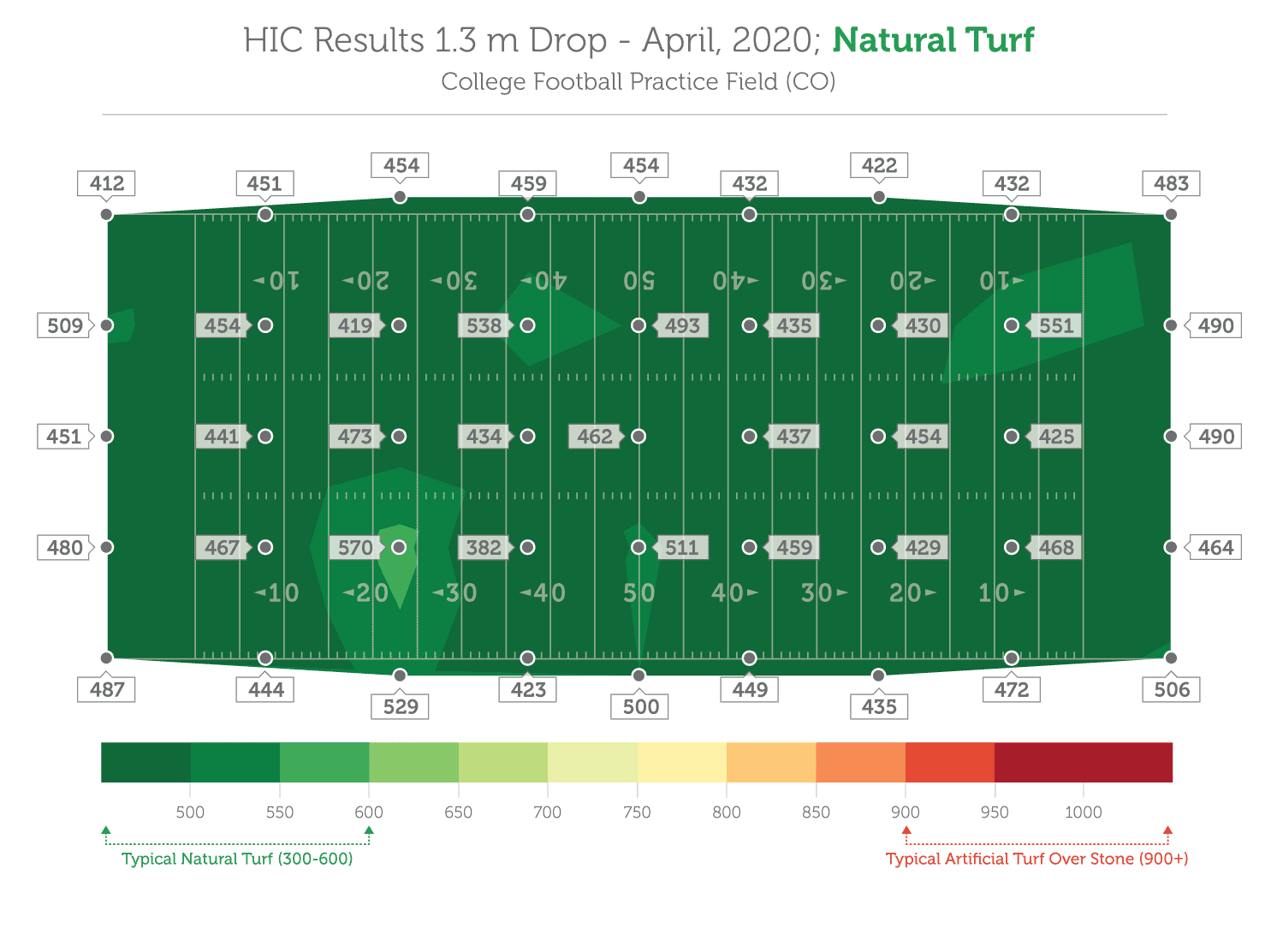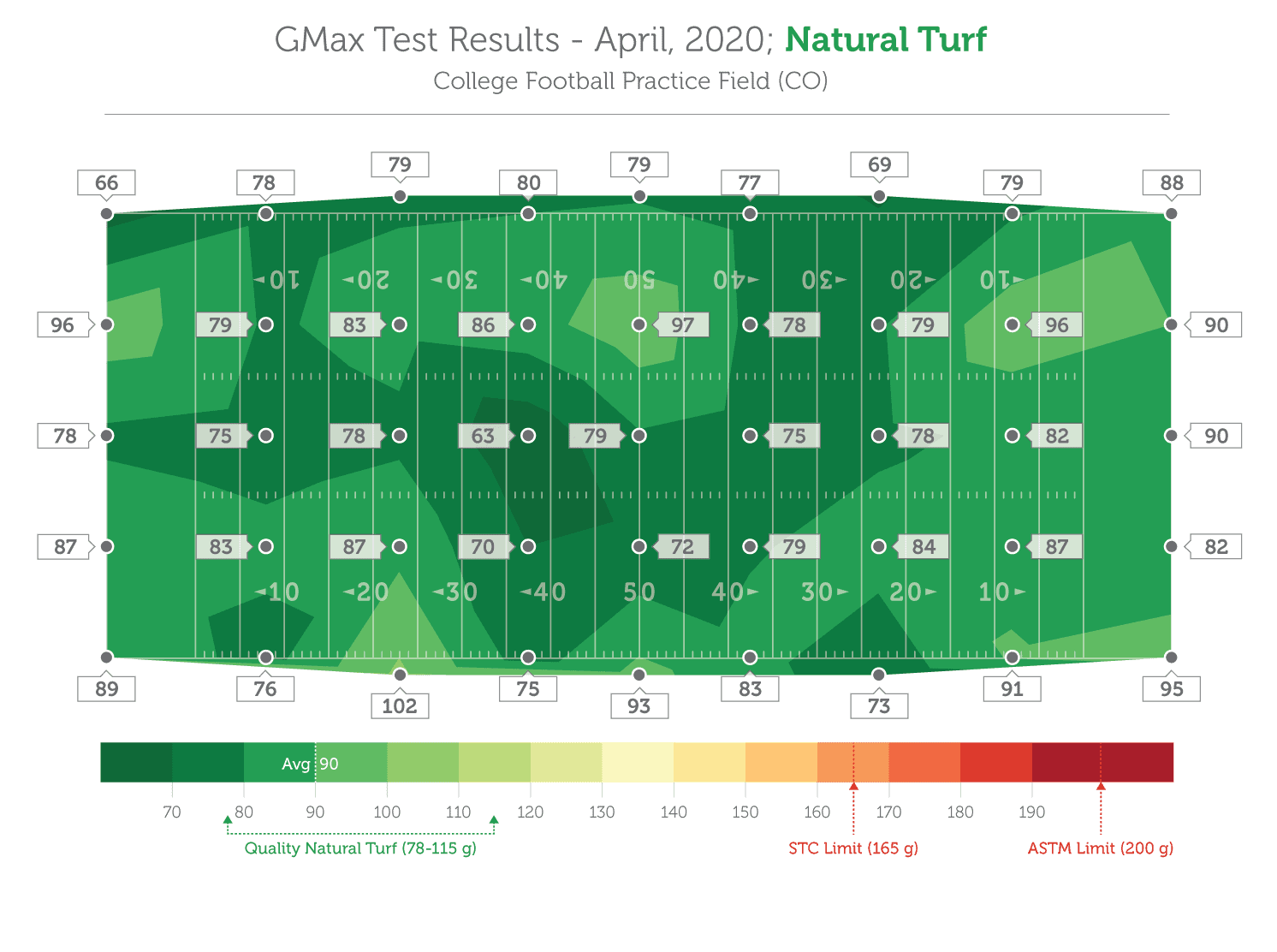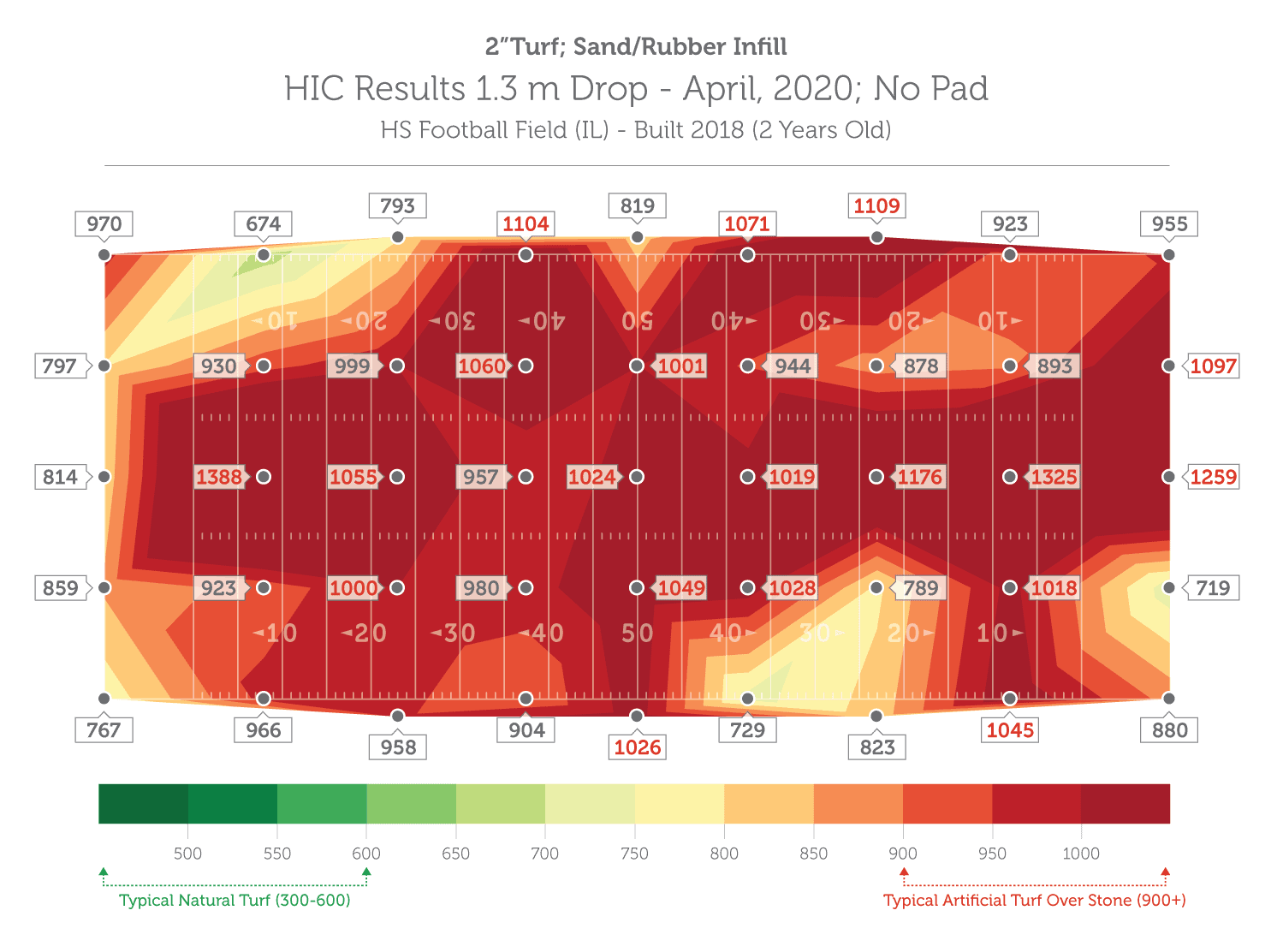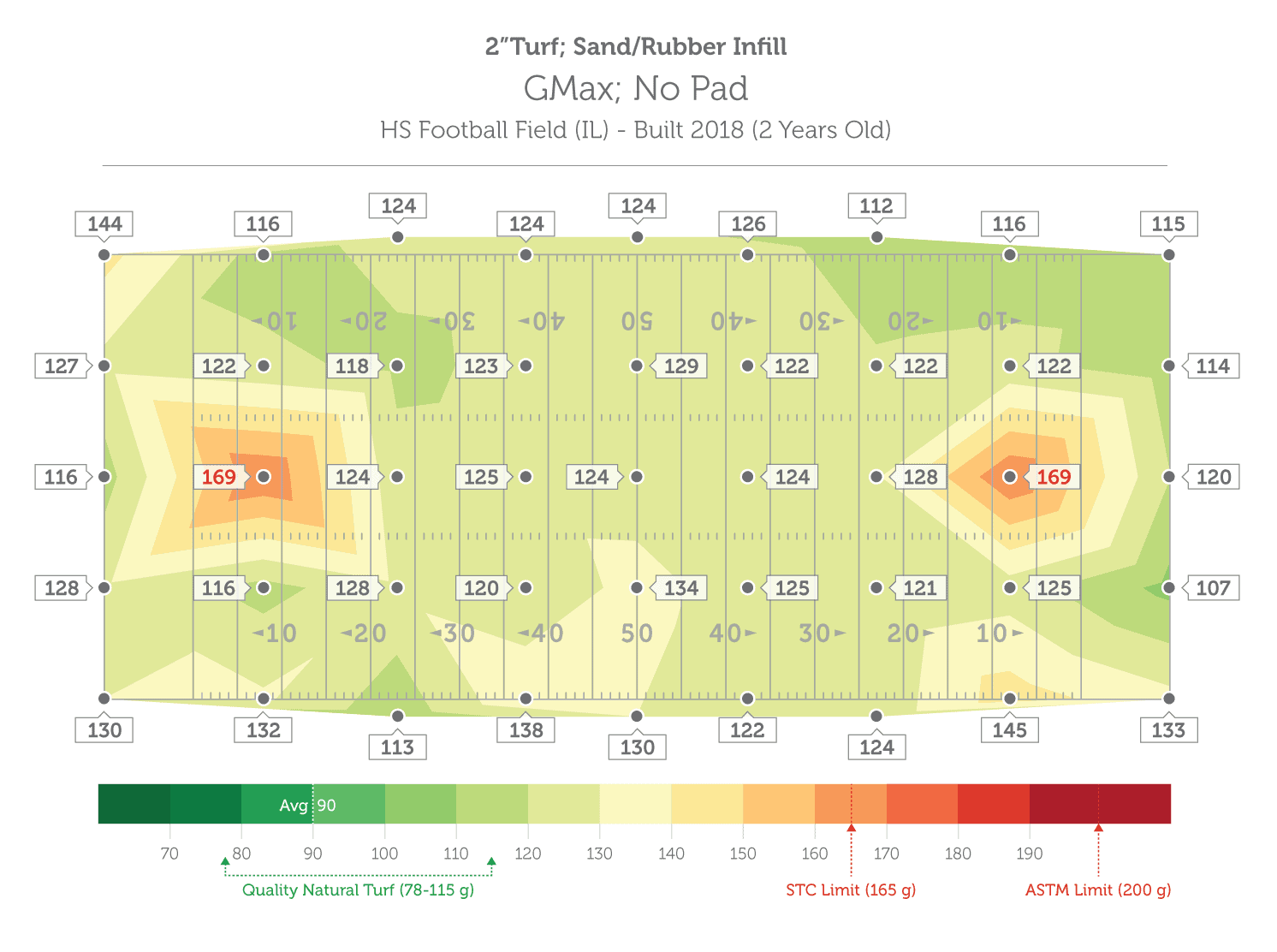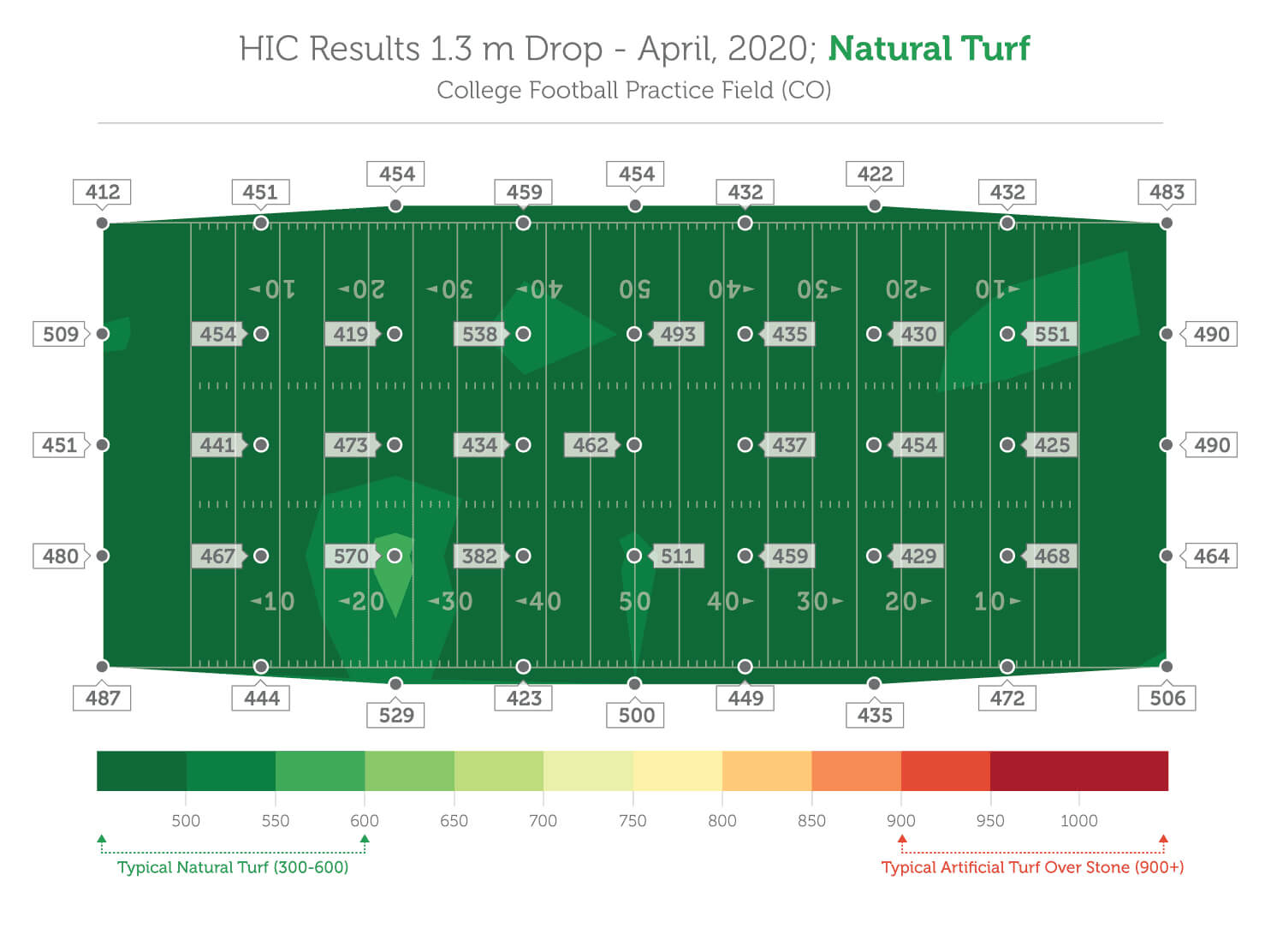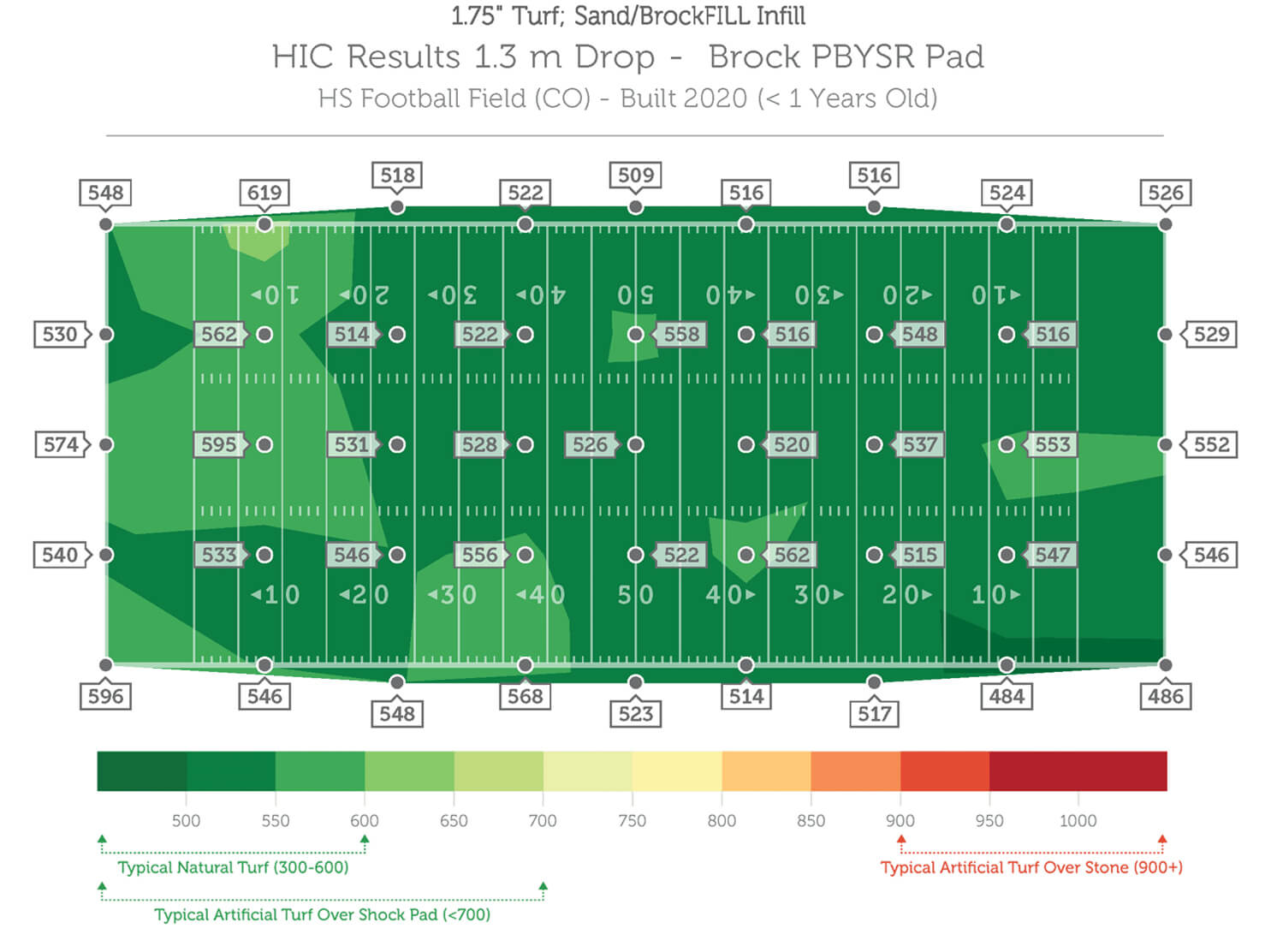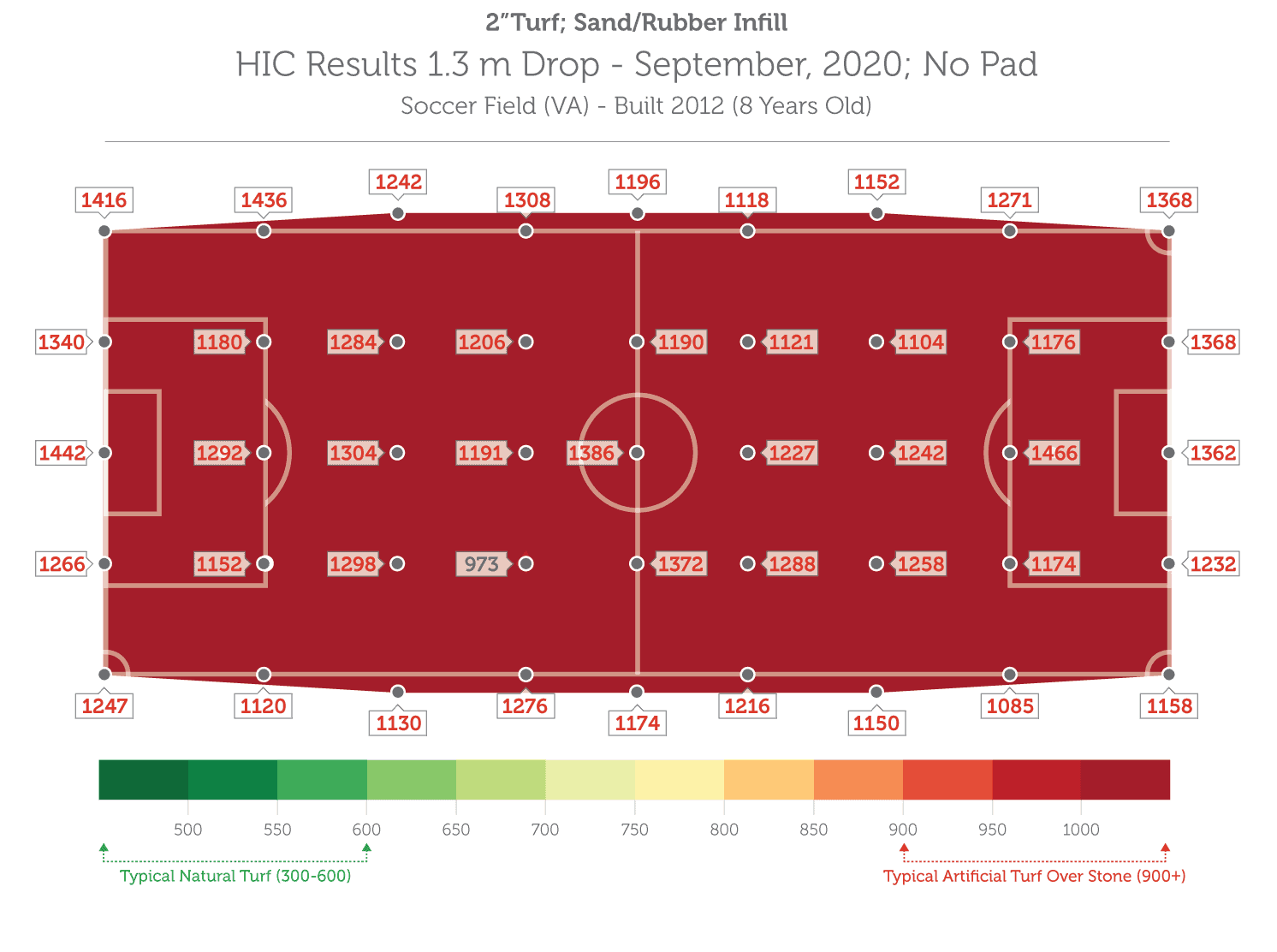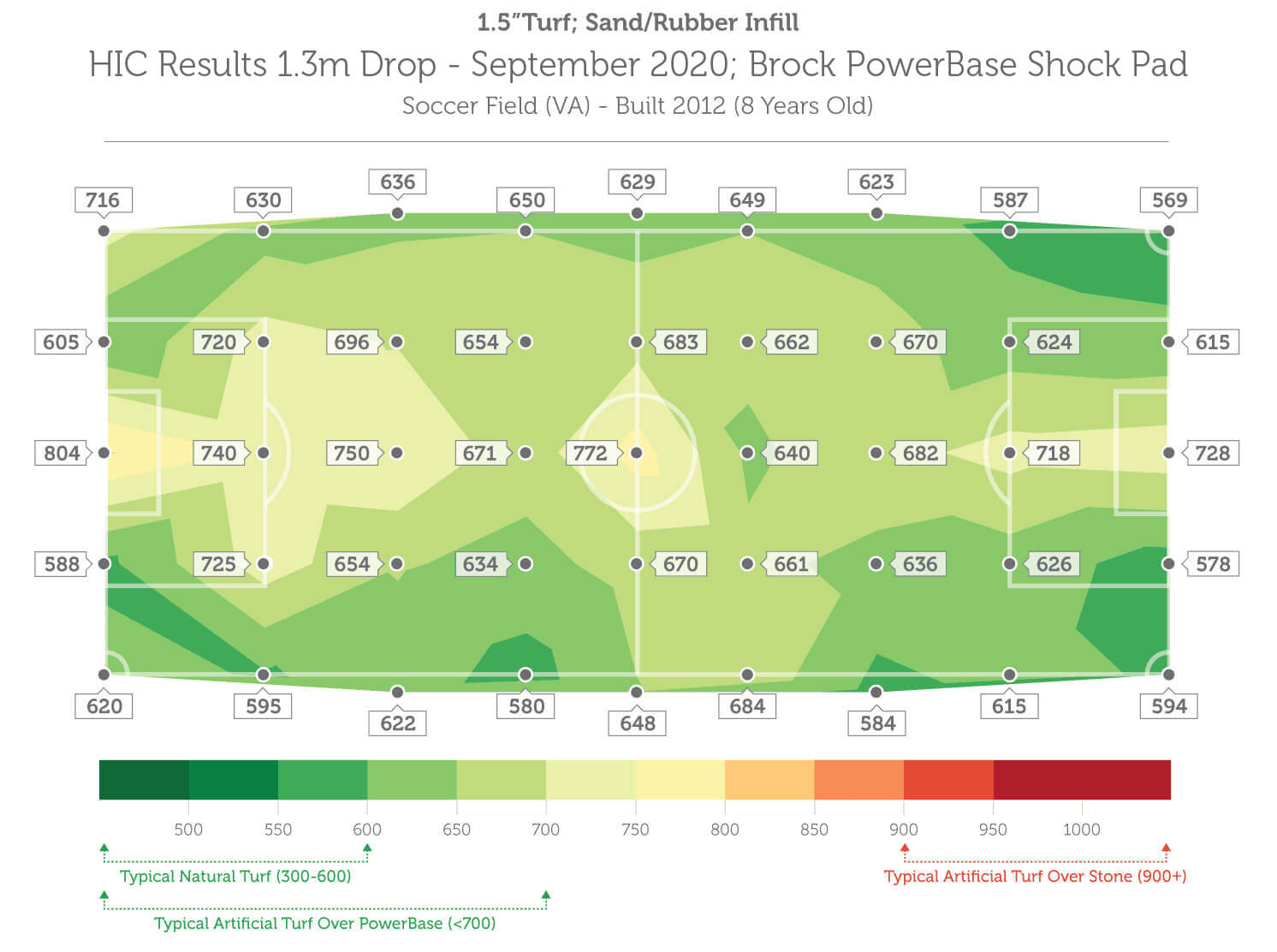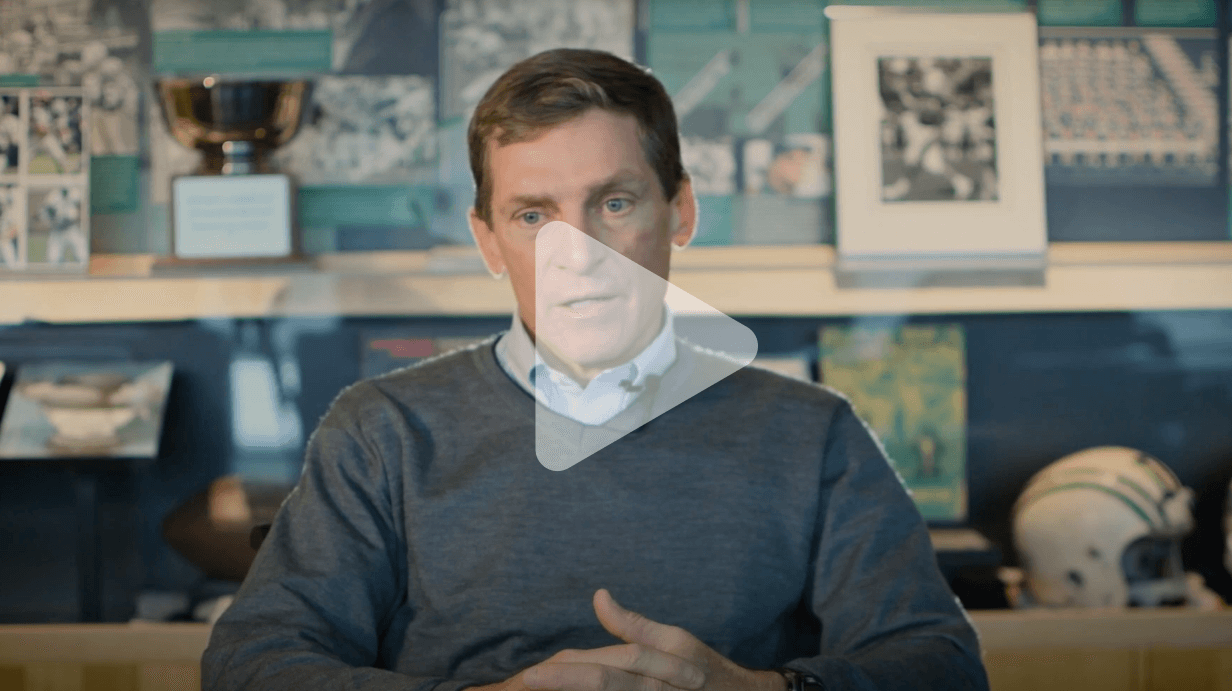Impact
The science is clear: 1 in 5 concussions results from head to surface collisions. And now the largest study of chronic traumatic encephalopathy (CTE) to date found that the cumulative force of head hits absorbed by players in their careers is the best predictor of future brain disease. Meaning EVERY IMPACT COUNTS.
We don’t make turf. We make turf safer.
Preventing concussions in sports has become a national priority.
How we test impact safety
Only infilled turf over a quality shock pad can reach player safety ranges found in natural grass. We know this from the data collected from the GMAX test, the HIC test, the foot impact test, and measuring that same data over the life of the turf. This gives a more comprehensive picture of how the field is performing from an impact safety standpoint both when new, and during it’s use.
Head Impact Test
The HIC test correlates with the likelihood and severity of a head injury. It has been used for decades in the auto industry and for playground surfaces, and was adopted by ASTM for athletic fields in 2018. The HIC impact test drops a 10.1 lb. hemisphere projectile (curved like a human head) multiple times from increasing heights and determines the surface’s Critical Fall Height. The higher the Critical Fall Height, the safer the surface. A good natural grass field will produce a minimum critical fall height of about 6 feet or higher.
Surface Hardness Test
The test method covers the measurement of surface hardness. It does not correlate with head injury. Landing on a harder surface transmits more energy to the body so common sense would tell you that a “softer” surface would be better. It’s applicable to natural and artificial playing surfaces. It drops a 20 lb flat missile from 24″. Gmax is a good measurement when used in conjunction with HIC, but as a stand alone test it is not a total measurement of safety. A quality natural grass field will produce a GMax typically below 100 G’s.
Foot Firmness Impact Test
This test simulates the heel strike of an adult running athlete in stride. In other words, it measures the softness or hardness underfoot during play on a field. A great natural grass field hits the “sweet spot” of being firm underfoot while producing very low Gmax and high Critical Fall Height. This is why quality natural turf is the benchmark for quality artificial turf.
Athletes prefer natural turf because it is firm and fast to run on but does not inflict undue wear and tear on their bodies and heads during impacts with the surface. The lower the impacts to the player, the less the withdrawal from their Brain Savings Account.
Use the sliders below to see how different surface designs compare with the safety values of quality natural turf.
Natural Turf Gmax and HIC
Natural turf produces Gmax levels typically below 100 Gs, and HIC values well below the 1000 threshold.
Synthetic turf with sand rubber over stone
Synthetic turf without a shock pad may produce Gmax levels that appear acceptable, but fails the Head Injury Criteria levels by a lot, resulting in a significantly higher risk of serious head injury and a higher cost to the Brain Savings Account of each impact.
Synthetic turf with Shock pad compared to Natural turf
In the critical realm of Head Injury, using a shock pad brings HIC levels down near to those of natural turf, reducing the risk of head injury and the minimizing the cost of every impact.
As the field ages, the differences are obvious
Maintaining safety levels for the life of the turf is paramount with the investment in a synthetic turf field. Below compares an 8-year old field without a Brock shock pad with one that uses one. Remember, the goal is to achieve a HIC value below 1000.
Watch Now
Dartmouth Football has been a pioneer of safety innovation for nearly a decade. With the late Coach Teevens at the helm, Dartmouth football eliminated all player-on-player tackling in practice. In 2016 they continued their safety mission by installing a Brock Shock Pad System for their Artificial Turf Field.

